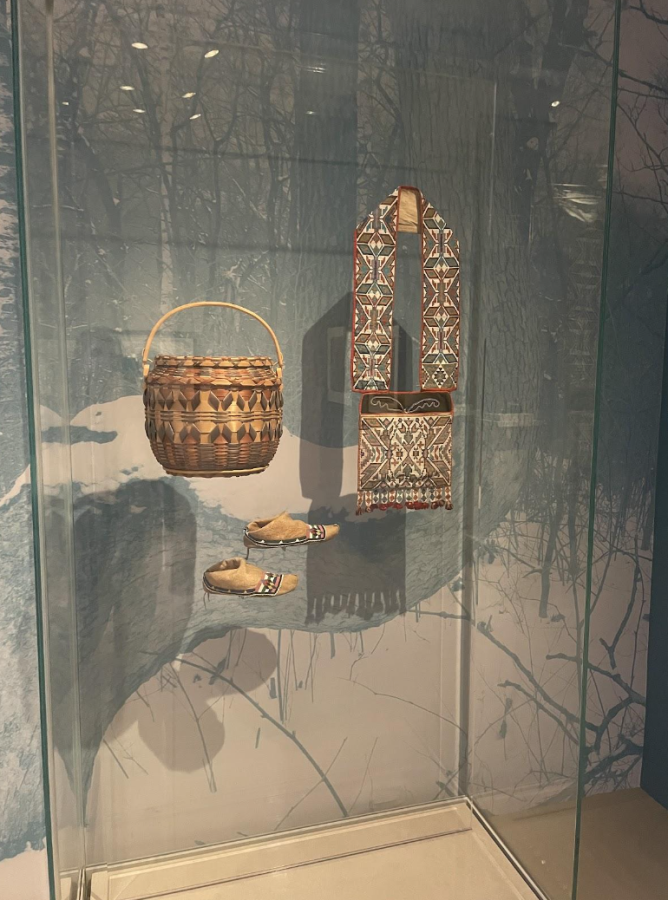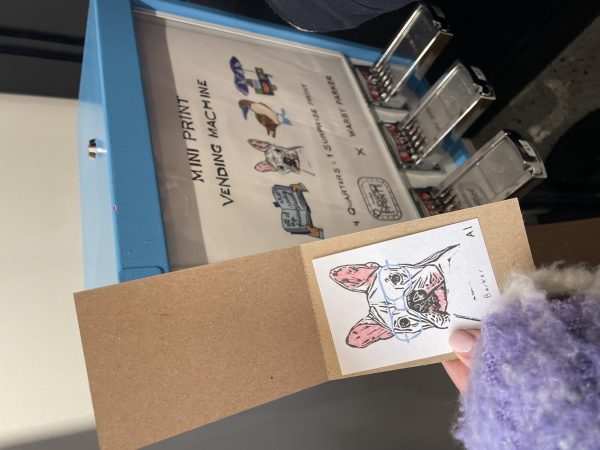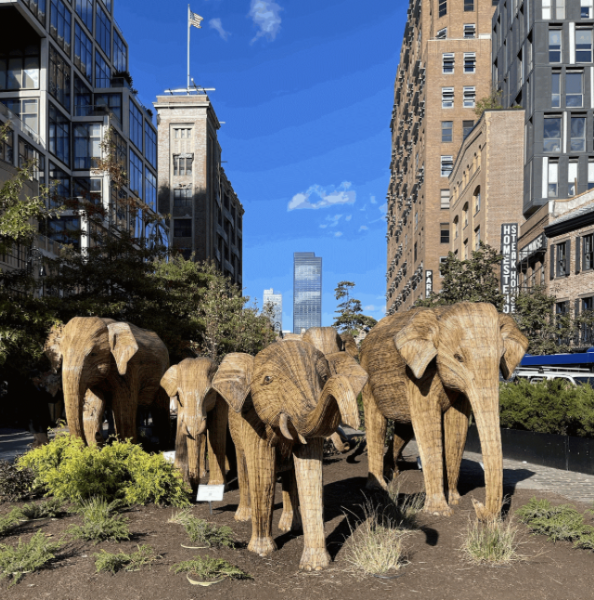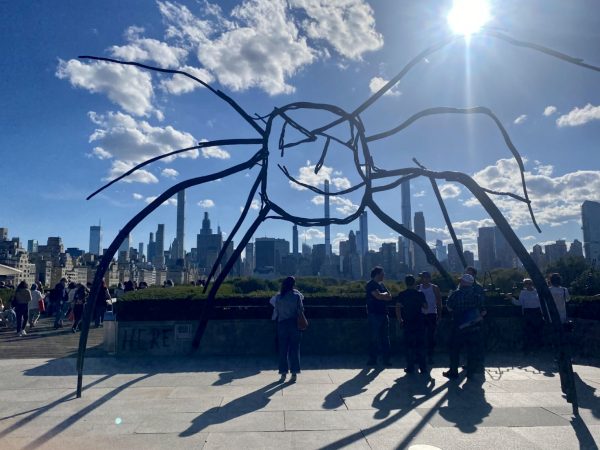Met’s “Water Memories” Showcases Indigenous Cultures
The Metropolitan Museum of Art (the Met) in New York City is home to many of the world’s most impressive artworks and creations developed throughout history. In June 2022, the Met opened a new exhibit titled “Water Memories.” This show- case highlights the significance of water and the role it plays in the Indigenious societies of America. This exhibit shares pieces from Native American culture, historic, contemporary and modern art.
The exhibit itself has a cool and calm atmosphere. Upon entering the exhibit, viewers are greeted by paintings depicting beaches and shorelines as well as a display of ceramic whale teeth in the very center of the room serving as the focal point. The exhibit consists of two rooms branching off from each other. Both modern and historic art blends together throughout the display. The ceramics represent a key aspect of Indigenous culture in the northeast coast of North America: the whaling industry.
In the period these pieces represent, water was not just essential for food and water but for trade and commerce as well. The Shinnecock tribe in Long Island, like others, had built an industry on whaling, using the Atlantic Ocean to do so. This portion of the exhibit shows how water was utilized by indigenous peoples to create businesses and maintain a flourishing community.
Moving through the exhibit, several authentic pieces such as baskets, jugs and bowls from various indigenous tribes are on display, each decorated with intricate pictures that vary from each tribe. These pieces each held similar purposes relating to water and its use as a resource within these communities. In addition to these pieces, replicas of certain indigenous carvings were also on display. In fact, controversy was noted for two replica carvings of whales on display. Many argued that the replicas were appropriation of these cultures in the time of their making.
The part of this exhibit that piqued my personal interest was the miniature canoe models. Of course, water was useful for traveling just as much as it was for trade. These canoes were often made in Native American communities as toys for boys to play with. The canoes were structured slightly differently depending on the group from which they originated.
And lastly, arguably the most enchanting of the display, was the more modern “Water Memory” print by Cara Romero. This picture shows two Pueblo corn dancers both sinking and rising in the ocean. It represents the disasters that ensued both naturally and from man made dams, specifically the construction of the Parker Dam that caused flooding in many indigenous homes in southern California. Both beautiful and eerie, this picture sheds light on how the human manipulation of bodies of water can be both a blessing and a curse.
This exhibit shows an impressive array of art. The pieces I have mentioned are the center of the exhibit and easily portrayed the purpose of the display. I found it fascinating and brilliant how the traditional pieces were blended with modern art. It helped move this exhibit throughout time, and it showed how these historical practices still have an impact in the modern world.
I also thought it was creative to center this exhibit on a specific element. Using water, a simple necessity, to guide viewers through the history of Native Americans was a unique aspect of this exhibit. When walking through the Met, each section is categorized based on time period, culture or artist. This was the only exhibit I had experienced that pulled from a specific element needed in the society to explain the rest of their culture. I thought that this had contributed greatly to the rest of the American Wing as well.
In total, I would give this exhibit a four-star rating. I found it incredibly unique and interesting. However, it is almost hidden inside the Museum. I can see viewers overlooking the display. There were other exhibits that were more impressive, but I am grateful I saw this one. The art was not only beautiful, but it also taught me something new and the blend of artwork was fascinating. If you are going to the Met, I would recommend stopping by this exhibit, especially if you are someone who takes interest in American history. This exhibit provides an excellent perspective.

Isabella DeRosa is a junior from Wayne, N.J., majoring in psychology and minoring in journalism. She joined the Ram as a contributing writer her first...












































































































































































































